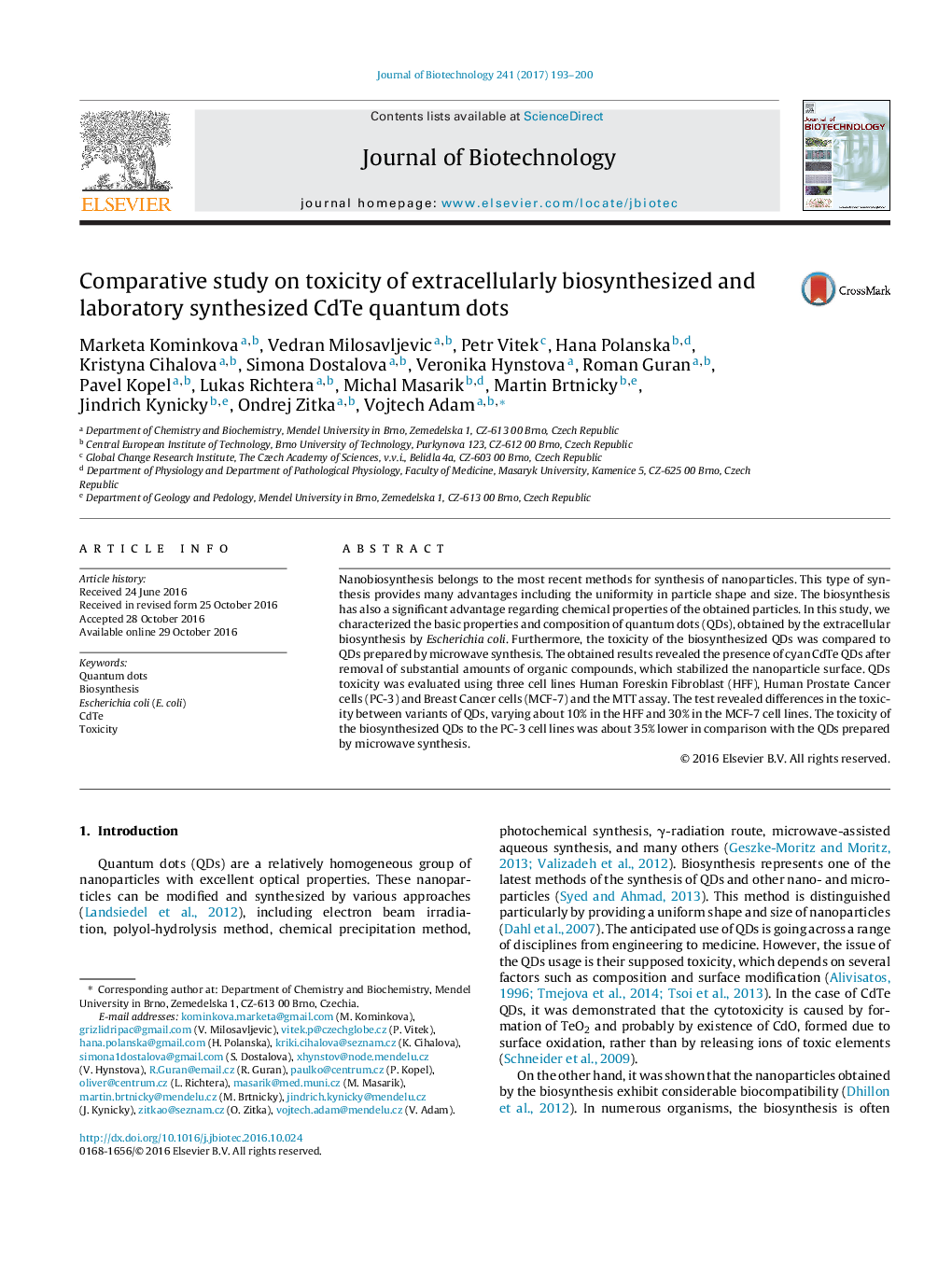| Article ID | Journal | Published Year | Pages | File Type |
|---|---|---|---|---|
| 6452168 | Journal of Biotechnology | 2017 | 8 Pages |
â¢QDs obtained by the extracellular biosynthesis by Escherichia coli.â¢Toxicity comparison of biosynthesized QDs and microwave-prepared QDs.â¢Toxicity was evaluated using HFF, PC-3 and MCF-7 cell lines and the MTT assay.
Nanobiosynthesis belongs to the most recent methods for synthesis of nanoparticles. This type of synthesis provides many advantages including the uniformity in particle shape and size. The biosynthesis has also a significant advantage regarding chemical properties of the obtained particles. In this study, we characterized the basic properties and composition of quantum dots (QDs), obtained by the extracellular biosynthesis by Escherichia coli. Furthermore, the toxicity of the biosynthesized QDs was compared to QDs prepared by microwave synthesis. The obtained results revealed the presence of cyan CdTe QDs after removal of substantial amounts of organic compounds, which stabilized the nanoparticle surface. QDs toxicity was evaluated using three cell lines Human Foreskin Fibroblast (HFF), Human Prostate Cancer cells (PC-3) and Breast Cancer cells (MCF-7) and the MTT assay. The test revealed differences in the toxicity between variants of QDs, varying about 10% in the HFF and 30% in the MCF-7 cell lines. The toxicity of the biosynthesized QDs to the PC-3 cell lines was about 35% lower in comparison with the QDs prepared by microwave synthesis.
